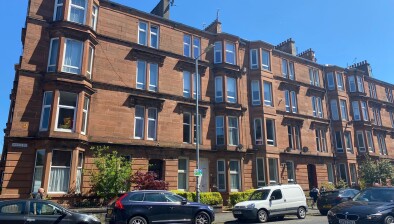Blog: A new PRS in time for Christmas

To mark today’s introduction of the new Private Residential Tenancy, Ashley Campbell outlines the ramifications of the new regime.
It’s Friday, it’s the first of December, most of us will be thinking about plans for the weekend or how many Christmas gifts we still need to tick off the list in the next three weeks. But if you are a private landlord or tenant living in Scotland, make sure you spare a thought for the brand new tenancy regime that starts today.
Why we need to change the PRS
The private rented sector (PRS) in Scotland has been growing steadily and now provides a home for around 14% of our population. As the housing market has changed, the type of people who live in the PRS has changed too. Once associated with young people starting out or students who only needed a temporary place to stay before embarking on their working life, the PRS is now home to more families and people who want to put down roots in a community but who aren’t able to buy their own home. People who might previously have lived in the social rented sector might also find themselves renting privately because of a lack of affordable housing supply.
The new regime aims to make renting more secure for private tenants while retaining flexibility for those who do want or need to move.
Rent has also been increasing significantly in particular ‘hot spots’. The latest Scottish Government figures show that average rents in the Lothians increased by 33.7% between 2010 and 2017 compared to an increase in consumer price index (CPI) of 15.9% over the same period. In greater Glasgow the increase has been 32.2% while in every other area of Scotland, private rents have increased below CPI. These statistics paint a complex picture. While there is a clear need to address spiralling rents in some areas, there is no ‘one size fits all’ solution and it will be important to ensure that landlords are still able to run their businesses and invest in their properties under the new regime. So what will change?
A new tenancy
From today, every new tenancy issued in the PRS in Scotland must be a Private Residential Tenancy (PRT). Existing tenancies issued before 1 December will remain in place until they come to an end.
The Scottish Government has developed a model tenancy, and an online tool for generating it, that can be used by private landlords. If a landlord chooses to use this tenancy, they must provide their tenant with accompanying easy read notes. Alternatively, landlords can develop their own PRT but they must ensure that all of the standard clauses that are legally required have been included. They must also provide their tenant with a guide to the standard clauses.
The PRT changes the way that tenancies can be ended. Under the old regime, landlords were able to give tenants notice to leave after the tenancy came to a natural end without having to give a specific reason. Under the new PRT, landlords will have to state at least one of 18 grounds for eviction. If the tenant does not agree to leave or disputes the reason given, the case will go to the Housing and Property Chamber of the First Tier Tribunal (the Tribunal). Some of the grounds are mandatory, some are discretionary and some have mandatory and discretionary elements.
Tenants will be able to end the tenancy by giving their landlord at least 28 days notice.
The Scottish Government has produced handy guidance on the PRT for landlords and tenants.
Rent increases
Under the PRT, landlords can only increase rent once in any 12 month period and must give tenants at least three months notice. In general cases, there is no limit on the amount that rent can be increased by but tenants can appeal to the Tribunal if they think that the proposed increase is unreasonable.
Local authorities have also been given powers to apply to have a particular area designated as a Rent Pressure Zone (RPZ) if they can provide Scottish Ministers with evidence that rents are rising too much, causing problems for tenants in the area and creating pressure on affordable housing. If an RPZ is designated, rent increases in that area will be capped at CPI plus 1% plus an additional amount set by Ministers (the additional amount could be zero or any increment of 0.5%).
What does this all mean?
The intention behind the changes is to make the PRS more secure for private renters while ensuring that landlords can still run viable businesses and continue to invest in the sector. A fine balancing act.
While local authorities will play a part in enforcing the new rules, their resources are already stretched. In reality, the success of the new regime will rely heavily on landlords and tenants knowing about the changes and how they should be applied. Tenants should be empowered to challenge poor landlords safe in the knowledge that they will not face arbitrary evictions. But this relies on the assumption that tenants will be aware of their rights and have the confidence, skills and time to be able to take a case to the Tribunal.
As for RPZs, while some local authorities (including Edinburgh, Glasgow and Highland) have indicated that they will explore possibilities for an RPZ application, the volume of evidence required by Ministers is extensive which could prove problematic. Until an RPZ has been granted, it is difficult to predict how this power will work in practice.
It will take some time for changes to bed in and to see what kind of long term impact the new regime might have on Scotland’s PRS.








